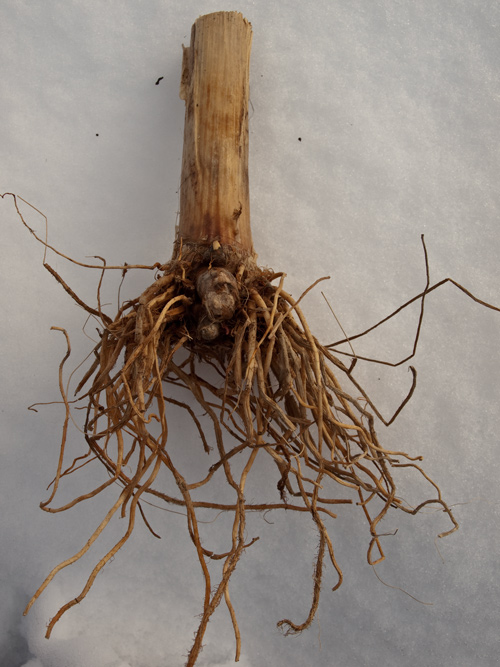At Fort Clatsop near the Pacific Ocean, Lewis begins his treatise on bird species starting with the Columbian sharp-tailed grouse—a species new to science. He also writes about Chinookan slavery and their use of cattail roots.
Cuscular
by Yellowstone Public Radio[1]Originally aired weekdays by Yellowstone Public Radio during the Bicentennial observance of 2003-2006. Narrated by Hal Hansen. Scripts by Whit Hansen and Ed Jacobson. Produced by Leni Holliman. © … Continue reading
Hunting
This morning we despatched Sergt. Gass with 12 men in two Canoes in quest of the Elk which had been killed by the hunters the day before yesterday. they returned with the flesh of three of them late in the evening. Thompson was left with the hunters in order to jurk and take care of the flesh of the remaining two.
—William Clark
Youngs River Falls
There is a large river that flows into the southeast part of Hayley’s Bay [Youngs River]; upon which, about 20 miles from its mouth, our hunters discovered falls, which had about 60 feet of a perpendicular pitch.
—Patrick Gass
Chinook Slave
Kuskelar and wife left us about noon. he had a good looking boy of about 10 years of age with him who he informed us was his slave.
—Meriwether LewisThe boy which this Indian offered to Sell to me is about 10 years of age.
—William Clark
Sharp-tailed Grouse
The Grouse or Prarie hen is peculiarly the inhabitant of the Grait Plains of Columbia. They do not differ from those of the upper portion of the Missouri
—Meriwether Lewis
Cattail Rhyzome
Typha latifolia
© 2010 by Kristopher K. Townsend. Permission to use granted under the Creative Commons Attribution-Share Alike 4.0 International license.
Cattail Root
The Indians of this neighbourhood eat the root of the Cattail or Cooper’s flag. it is pleasantly taisted and appears to be very nutricious.
the inner part of the root which is eaten without any previous preperation is composed of a number of capillary white flexable strong fibers among which is a mealy or starch like substance which readily desolves in the mouth and separate from the fibers which are then rejected.
it appears to me that this substance would make excellent starch; nothing can be of a purer white than it is.—
—Meriwether Lewis
Weather Diary
Aspect of the weather at Rise
Wind at rise
Aspect of weather at 4 O’Ck P. M. Wind at 4 OCk. P. M. fair after rain & clouds S. W. rain after clouds & rain S. W The clouds interfered in such manner that no observations could be made this morning.— a great part of this day was so warm that fire was unnecessary, notwithstanding it’s being cloudy and raining.
—Meriwether Lewis[2]To assist the reader, the editor of this web page has omitted the “Day of the Month” column and spelled out some abbreviations.
Experience the Lewis and Clark Trail
The Lewis and Clark Trail Experience—our sister site at lewisandclark.travel—connects the world to people and places on the Lewis and Clark Trail.
Plan a trip related to March 1, 1806:

Fort Clatsop is a High Potential Historic Site along the Lewis and Clark National Historic Trail managed by the U.S. National Park Service. The site is managed by the Lewis and Clark National and State Historic Parks.
Notes
| ↑1 | Originally aired weekdays by Yellowstone Public Radio during the Bicentennial observance of 2003-2006. Narrated by Hal Hansen. Scripts by Whit Hansen and Ed Jacobson. Produced by Leni Holliman. © 2003 by Yellowstone Public Radio. |
|---|---|
| ↑2 | To assist the reader, the editor of this web page has omitted the “Day of the Month” column and spelled out some abbreviations. |




